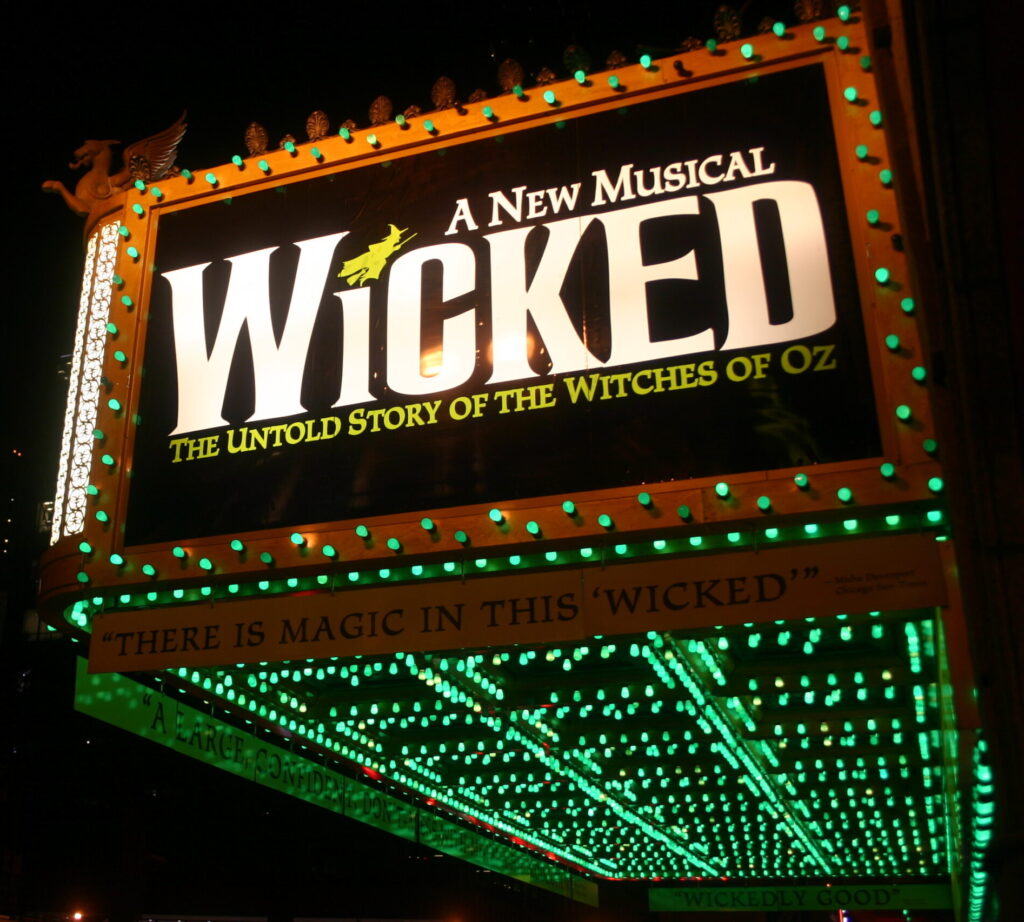I didn’t like Wicked (2024). Even though it takes place in the magical land of Oz, everything looks too hyper realistic to be considered theatrical. The colors were dulled, the CG effects overwhelmed every scene, and the monkeys were blue for some reason. Aside from the singing and dancing, there was nothing to suggest that Wicked needed to be a musical.
I sat down and watched this two hour and forty minute behemoth with my boyfriend over winter break. At the end of the number “The Wizard and I,” Elphaba is running through a field outside her school to emphasize the scope of her plans. Afterwards my boyfriend said, “Now she has to walk all the way back.”
He was right: Cynthia Erivo looks stupid running and singing a coming-of-age ballad if she isn’t actually going anywhere. But the stage doesn’t show you that. It limits your imagination in a constructive way, I feel. The song is allowed to take center stage instead of acting as a vehicle for showcasing a fake school. Personally, I don’t need a fully realized universe to get the story.
The importance of the stage cannot be understated. It’s a barrier that demands suspension of disbelief and allows singing and dancing to become a means of expression, not a representation of reality. We understand as an audience that the theater isn’t real life. With movies, however, the barrier is not as stark. Not all movies are fantastical, choreographed, or staged to a surreal degree.
When it comes to making movie musicals, choices like filming on location and using CG effects muddle this barrier between what’s theatrical and what’s reality. I’m no longer asked to believe in a fictional place; it’s right in front of me. Instead, I’m asked to believe that people in said place would sing and dance in the town square. But that doesn’t feel like reality as I know it, and now I’m conflicted about how much I relate to the characters. Can I take them seriously if they stop every ten minutes to sing a little song?
This isn’t to say movie musicals can’t be done well. The Wiz (1978) used landmarks throughout New York City as filming locations, but made it look like an extended stage captured on film. Each bridge, building, or rollercoaster was transformed into an isolated set, redesigned to look like Oz. We don’t see every alley and building, and there are no aerial establishing shots of Harlem’s many neighborhoods. That would make NYC, a.k.a. Oz, look too grounded. The practical effects of 1978 are limited compared to today’s standards, but are a more accurate representation of the theater. As a viewer, I buy into musical Afrofuturism as an art form; it has meaning specifically because it’s not true-to-life. Wicked wants me to believe Oz is as real as NYC and choreographed dances with all my classmates are normal. I don’t buy it.
Wicked is only the most recent of many movie musicals that have fallen into this trap. Cats (2019), Cinderella (2021), and Into The Woods (2014), are more extreme examples of fantastical theater gone wrong with the help of CG effects. These movies suffered in other areas as well: writing, pacing, James Cordon, to name a few – but I’d argue that traditional costumes, lighting, and practical effects would have significantly improved the end products.
Many of the classic movie musicals from the 1950s and 60s inadvertently benefited from limited resources. Having interior scenes set on soundstages subconsciously gives the presence of a stage, even if it was industry standard at the time. Classics such as Singing in the Rain (1952) and My Fair Lady (1964) were filmed entirely on sets, but others like The Sound of Music (1965), Hello Dolly! (1969), and West Side Story (1961) had a combination of outdoor locations and soundstage interiors. The grandeur of the motion picture was captured with real parades and alleyways and mountainsides, but the stage was preserved through what happened indoors.
Some of the best movie musicals made in my lifetime may not have followed this formula exactly, but there were deliberate choices that told the audience “this is a musical” outside of song and dance. For instance, La La Land (2016) and Steven Speilberg’s West Side Story (2021) used lighting and costumes to achieve this effect. What’s important is that the barrier between musical and reality stays distinguishable. You won’t convince me to like the movie Wicked no matter how hard you try, but I’ll hold out hope that Hollywood can respect theater as an art form in the future.

